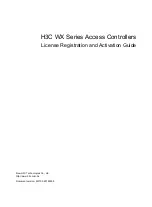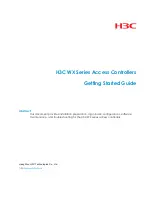TIME PROCESSOR UNIT
MC68332
7-14
USER’S MANUAL
7.6.2 Channel Control Registers
The channel control and status registers enable the TPU to control channel interrupts,
assign time functions to be executed on a specified channel, or select the mode of op-
eration or the type of host service request for the time function specified. Refer to
.
7.6.2.1 Channel Interrupt Enable and Status Registers
The channel interrupt enable register (CIER) allows the CPU to enable or disable the
ability of individual TPU channels to request interrupt service. Setting the appropriate
bit in the register enables a channel to make an interrupt service request; clearing a
bit disables the interrupt.
The channel interrupt status register (CISR) contains one interrupt status flag per
channel. Time functions specify via microcode when an interrupt flag is set. Setting a
flag causes the TPU to make an interrupt service request if the corresponding CIER
bit is set and the CIRL field has a nonzero value. To clear a status flag, read CISR,
then write a zero to the appropriate bit. CISR is the only TPU register that can be ac-
cessed on a byte basis.
7.6.2.2 Channel Function Select Registers
Encoded 4-bit fields within the channel function select registers specify one of 16 time
functions to be executed on the corresponding channel. Encodings for predefined
functions in the TPU ROM are found in
.
7.6.2.3 Host Sequence Registers
The host sequence field selects the mode of operation for the time function selected
on a given channel. The meaning of the host sequence bits depends on the time func-
, which is a summary of the host sequence and host
service request bits for each time function.
7.6.2.4 Host Service Registers
The host service request field selects the type of host service request for the time func-
tion selected on a given channel. The meaning of the host service request bits is de-
termined by time function microcode.
A host service request field cleared to %00 signals the host that service is completed
by the microengine on that channel. The host can request service on a channel by writ-
ing the corresponding host service request field to one of three nonzero states. It is a
good practice to monitor the host service request register and wait until the TPU clears
the service request before changing any parameters or issuing a new service request
to the channel.
7.6.2.5 Channel Priority Registers
The channel priority registers (CPR1, CPR2) assign one of three priority levels to a
channel or disable the channel.
indicates the number of time slots guaran-
teed for each channel priority encoding.
F
re
e
sc
a
le
S
e
m
ic
o
n
d
u
c
to
r,
I
Freescale Semiconductor, Inc.
For More Information On This Product,
Go to: www.freescale.com
n
c
.
..


















